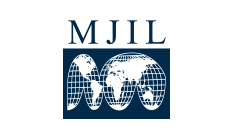Abstract
The article starts with a section containing a historical description (Part I). The turn to broader historical accounts is apposite since the engagement of international law with slavery, servitude, and forced labor predates the emergence of international human rights law. It is also important to clarify whether there is any continuity between these earlier engagements of international law and Article 8 of the ICCPR. When it comes to slavery, it is important to consider the practices to which this label was attached and how this still influences the contemporary understanding of the term. Notably, the terminological fragmentation between slavery and forced labor was established prior to the birth of human rights law, which also demands a turn to history so that the division and the differences between these terms can be better explained.
Part II proceeds to examine the U.N. era and distinguishes three important developments. First, the adoption of the Universal Declaration on Human Rights (UDHR) proclaimed a right not to be subjected to slavery and servitude. Second, the non-binding character of the declaration and the uncertain prospects for the adoption of a binding human rights law instrument at that time, prompted the U.N. to adopt in 1956 a separate treaty addressing “institutions and practices similar to slavery,” which led to an additional conceptual fragmentation. Finally, the mechanisms for monitoring states’ efforts to address slavery were very weak; I argue that this weakness was not remedied with the establishment and functioning of the U.N. Working Group on Contemporary Forms of Slavery.
Part III seeks to examine the improvements introduced with the 2007 mandate of the U.N. Special Rapporteur on Contemporary Forms of Slavery. It shows that the work of the rapporteur has enhanced the understanding of the U.N. and the international community of the problem in different regions in the world, but it also emphasizes that her mandate is not strictly legal. The HRC is tasked with setting legal standards at the U.N. level. Part IV contains an account of the work of the Committee in this area. It shows that overall, the HRC has failed to furnish useful clarifications as to the scope of the rights enshrined in Article 8 of the ICCPR. Considering this underdevelopment, Part V raises salient issues that must be considered to elevate Article 8 of the ICCPR from an abstract provision into an effectively applicable legal standard. The efforts to bring some definitional clarity, however, would be almost inconsequential without consideration of the obligations imposed upon states once factual circumstances are deemed to constitute slavery, servitude, or forced labor. Part VI, therefore, points to some challenges brought about by these positive obligations.
Recommended Citation
Vladislava Stoyanova,
United Nations Against Slavery: Unravelling Concepts, Institutions and Obligations,
38
Mich. J. Int'l L.
359
(2017).
Available at:
https://repository.law.umich.edu/mjil/vol38/iss3/2


